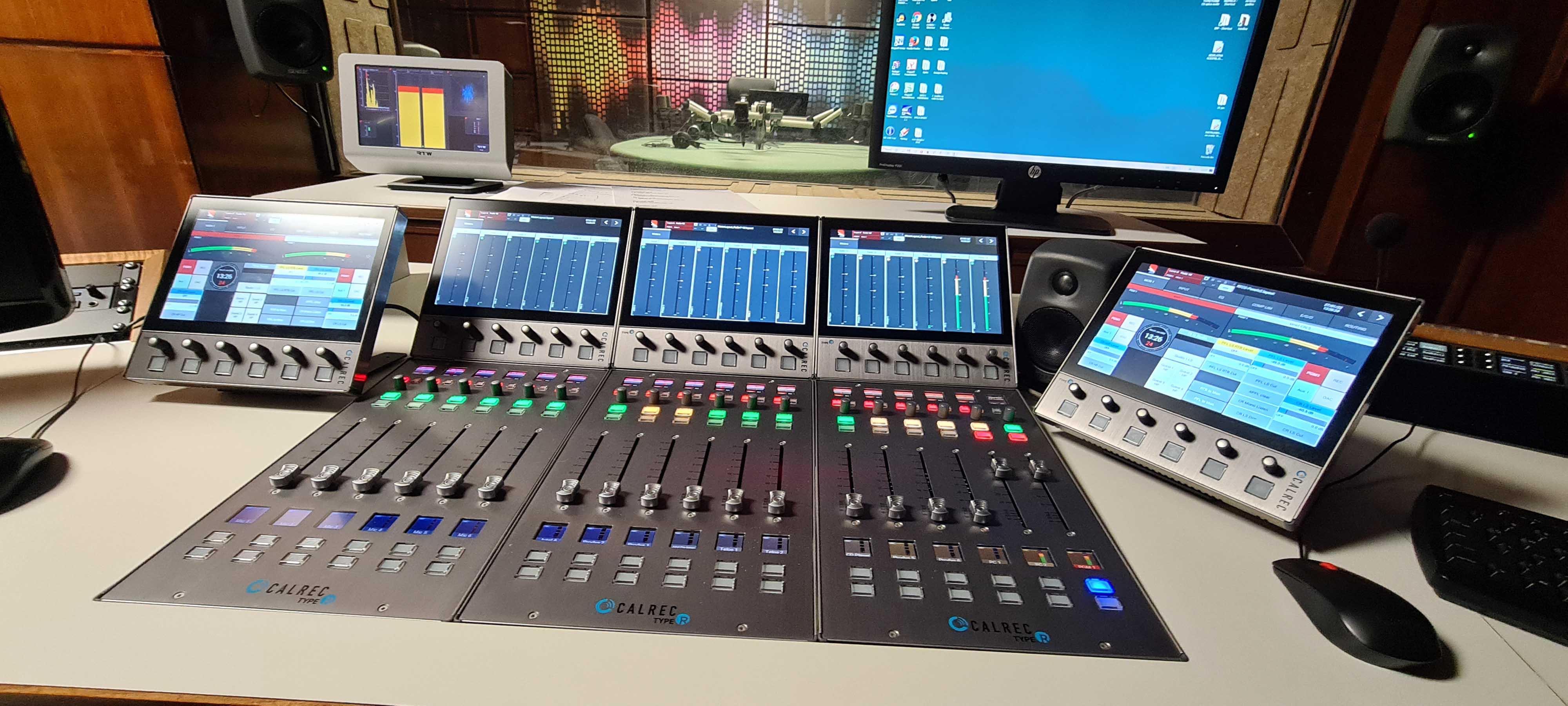
HEBDEN BRIDGE, U.K.—Public service broadcaster Radio and Television Montenegro (RTCG) has completed an upgrade of its Radio Montenegro and Montenegro Television facilities, including IP technology from Calrec to support its move to hybrid IP networking.
The upgrade to the broadcaster’s television facilities includes three new Artemis consoles, a router core, a Brio36 and two Type R consoles. On the radio side, five native IP Type R consoles, a Brio36 and a Hydra router have been put into use, Calrec said.
Calrec H2 IP Gateway technology is being used to integrate proprietary and AoIP networks. The broadcaster has deployed the technology to support operations of four TV stations and two radio channels, it said.
“This was a quantum leap for us as we moved to our current facilities in 1985 and haven’t reengineered them since then,” said Dejan Vujovic, deputy general manager for technology at RTCG. “Calrec’s audio technology is super-stable and fully featured, but above all it seamlessly supports analogue, AES and AoIP, which means we now have a true hybrid workflow which is completely transparent to users.”
The broadcaster is using its Artemis consoles for live program production, the and the Type Rs for continuity. “We can control the Type R core from multiple panels as we move from one continuity to another or if we need multiple operators doing something more complex. The audio quality both in radio and TV has drastically improved. From an engineering perspective, everything works like a charm,” said Vujovic.
The upgrade of the facilities has given the broadcaster’s staff an education in IP and enabled them to work on more complex productions, he said.
“This hybrid workflow helps us make better use of our resources and prepare our programming faster. Calrec’s Gateway technology is really the enabler for us to have both worlds — traditional and IP technology seamlessly integrated. It gives us peace of mind in that we have a robust, familiar technology which is futureproof at the same time, without compromising on the flexibility of what the system can do. We can now work on both large, complex productions and small-scale projects equally easily. We are really happy,” he said.
The professional video industry's #1 source for news, trends and product and tech information. Sign up below.
RTCG leveraged its new audio architecture for coverage of election night in 2021. More than 10 live reports from the field contributed to its coverage from three TV studios. Several Skype, Viber, Zoom and telephone resources also were used for contribution. All communications were handled from the Artemis consoles together with an Artists digital intercom network from Riedel, the company said.
More information is available on the company’s website.
Phil Kurz is a contributing editor to TV Tech. He has written about TV and video technology for more than 30 years and served as editor of three leading industry magazines. He earned a Bachelor of Journalism and a Master’s Degree in Journalism from the University of Missouri-Columbia School of Journalism.

